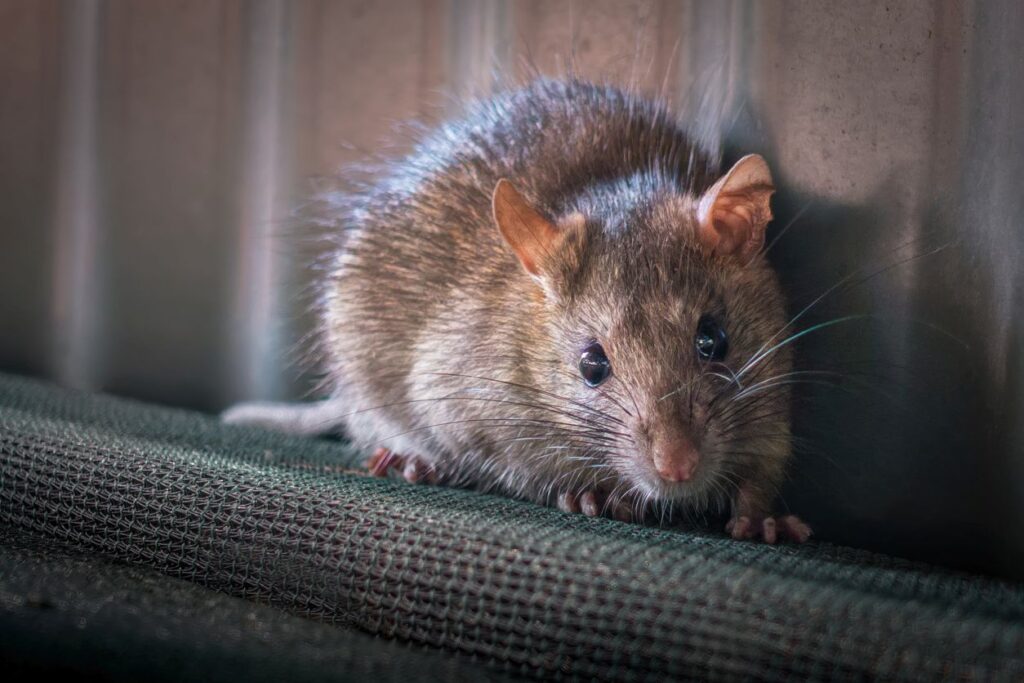
Rodents seek shelter and warmth inside accessible homes and businesses. While larger infestations make themselves known, it is best to catch rats and mice before their populations grow. But how do you know if you have a problem?
Here are 10 tell “tail” rodent infestation signs to look out for.
1. Chew Marks
Finding small chew marks on wood, cardboard, and other materials? Rodents of all sizes are known to gnaw on everything from baseboards to wires.
2. Musky Odor
A rodent infestation is usually accompanied by a musky odor. This odor tends to grow stronger as the infestation worsens.
3. Rotting Odor
If a rodent dies inside a dwelling the smell will be strong. We strongly advise calling a licensed pest control professional to find and remove dead rodents or other pests as they can be very hazardous. If you do remove a dead rodent on your own, be sure to wear gloves and a mask.
4. Odd Pet Behavior
If your dog or cat is scratching at walls or acting erratic in a certain area of the home, it could be a sign of rodents. Make a note of where they exhibit this behavior, it is great information to provide a pest technician when they inspect your home.
5. Droppings
Rodent droppings are amongst the most common and easily seen signs of an infestation. Mice droppings are usually no more than ¼” in length and are small, dark brown, with pointed ends. Rat droppings can be anywhere between ¾” and ½” long and vary in shape depending on the type of rat. Always use gloves and a mask when cleaning up rodent droppings.
6. Tracks
Tiny rodent footprints are another obvious sign of infestation. Look for these up high where dust collects easily and potential tracks would identifiable.
7. Holes
Mice and rats will sometimes gnaw small holes in thin walls or materials in order to create new entry points and ways to get around.
8. Allergies
It can be hard to determine the cause of allergies but pest allergies are often overlooked. The fur and droppings of rodents can actually cause allergic reactions in some people. 97% of allergists believe a pest-free home can help combat regular allergy problems.
9. Grease Marks
The oils on rodents fur can create grease marks, or streaks, on surfaces when they run across. Look for unexplained marks like this when inspecting for rodents.
10. Noise
Scampering, gnawing noises, and scratching could all be signs that a rodent, or rodents, are in your home or business. Noises are often heard in attics, ceilings, and inside walls.
Rodent infestations can be equally expensive and hazardous. Whether you have an active infestation or believe you may be vulnerable to one, don’t hesitate to give us a call! We offer no-charge inspections in order to identify offer the right solution for you.
Frequently Asked Questions About Rodent Infestations
If you’re seeing multiple signs—like droppings, gnaw marks, scratching noises, and foul odors—it’s likely an infestation. A single mouse sighting often means more are nearby.
Rodents can carry diseases such as hantavirus, leptospirosis, and salmonella. Their droppings, urine, and nesting materials can also trigger allergies and asthma.
Infestations typically increase in the fall and winter when rodents seek warmth and shelter indoors, but they can occur year-round.
No—rodents seek food, water, and shelter, regardless of cleanliness. Even tidy homes can attract them if entry points and food sources are accessible.
Very quickly. Mice can have litters of 5–10 pups every 3 weeks. In just a few months, a couple of mice can turn into a major problem. the coast
Wear gloves and a mask, ventilate the area, and use disinfectant to clean droppings or nesting materials. Never vacuum or sweep droppings dry, as this can release harmful particles into the air.
